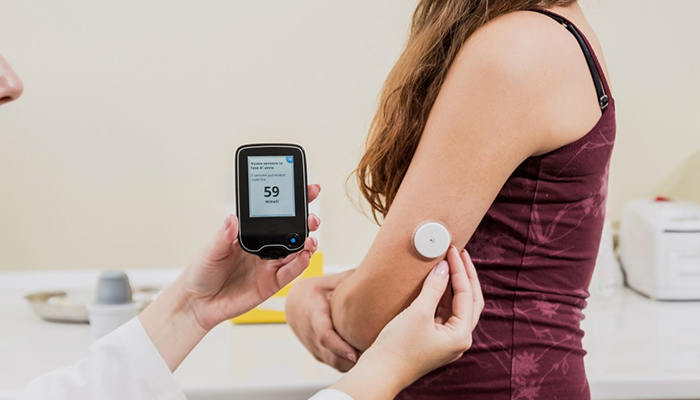
In recent years, devices have been available to continuously measure glucose levels. They have revolutionized self-monitoring of blood glucose levels and, with it, the lives of patients living with diabetes.
Zoom in on what continuous Blood glucose monitoring is, but also a review of the advantages and disadvantages of these new generation monitoring tools.
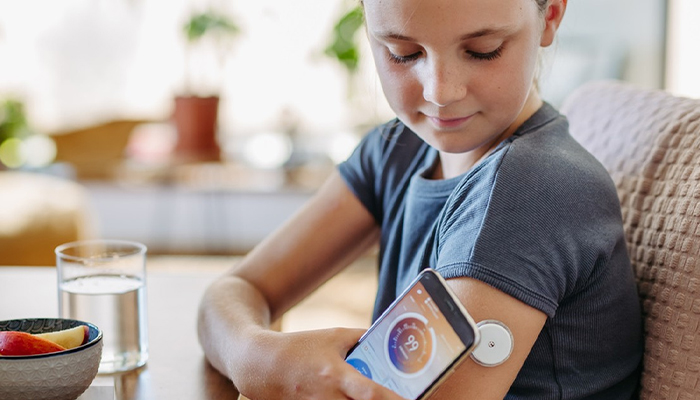
What is continuous Blood glucose monitoring?
Continuous Blood glucose monitoring (CGM), sometimes called continuous blood glucose monitoring, allows patients to track changes in their blood sugar levels in real time throughout the day.
It also helps patients living with diabetes to better understand the fluctuations in their blood sugar levels during the day, depending on activities (meals, physical activities, etc.). Indeed, CGM systems offer the possibility of displaying blood sugar measurements, in the form of curves, on a reading device (the receiver – a smartphone for example) and recording them, but also transmitting them to their diabetologist or another health professional.
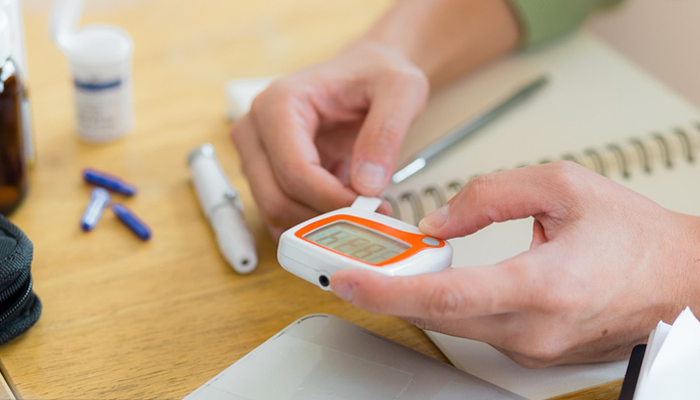
What is an MCG system made of and how does it work?
Continuous glucose measurement is carried out using a device which is composed, depending on the model:
- of a mini sensor,
- of a transmitter,
- of a receiver.
The sensor and transmitter coupling is waterproof. Some types of devices can be associated with an insulin pump.
The operating principle of continuous glucose monitoring is the same regardless of the type of device.
The sensor is stuck to the skin, usually on the abdomen, upper back, arm, or upper buttock. It is partly made up of a flexible electrode covered with an enzyme (glucose oxidase) and wrapped in a semi-permeable membrane. It is this electrode that penetrates under the skin to measure glucose. This sensor must be changed every 1 to 2 weeks depending on the device.
Electrical signals corresponding to sugar levels are obtained by enzymatic and electrochemical reactions between glucose in the interstitial fluid (the fluid that fills the space between blood vessels and cells) and glucose oxidase.
The sensor is combined with a transmitter that allows the transfer of glucose data to the receiver at regular intervals (on average every 5 minutes).
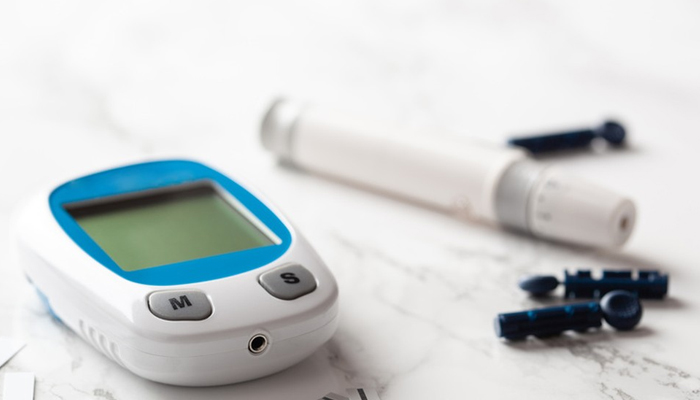
The main advantages of continuous glucose monitoring
Regular wearing of a CGM system can help:
Gain in comfort and quality of life: using a CGM device means you no longer have to prick your finger several times a day to measure your blood sugar, but also limits constraints by simplifying the equipment to be transported. Thus, the patients can control themselves more easily (at work, in the street, in the car, during sports, etc.).
Earlier detection of hypoglycemia and hyperglycemia: CGM devices have alarms that alert the patient if blood sugar levels fall below or above predefined thresholds. Some devices even anticipate the occurrence of hypoglycemia thanks to a predictive alarm, which allows the patient to intervene earlier and thus avoid the symptoms and consequences.
To reduce the fear of hypoglycemia: the trend arrows that accompany a measured blood sugar level, as well as the predictive alarm that alerts even before the occurrence of hypoglycemia, allows the patient to be reassured and to be safe in the face of the occurrence of severe hypoglycemia.
Improve glycemic balance: According to studies, continuous glucose monitoring can reduce glycated hemoglobin (HbA1c) sustainably.
Improve diabetes monitoring: the exchange between the patient, the diabetologist and the healthcare professionals is based on factual data. Indeed, thanks to continuous glucose measurement, healthcare professionals obtain thousands of measurements in an easy-to-read and analyze form: the ambulatory glycemic profile. This also allows for a more equal relationship. The patient feels in control of his/her treatment and the doctor is a partner and not just an authority.
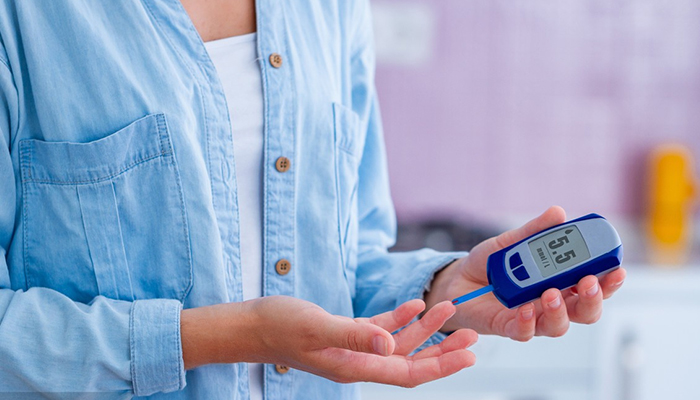
Disadvantages of MCG Systems
While they have many advantages, MCG systems are not without their constraints either.
First, the sensor can be perceived as invasive, since part of it is inserted under the skin and it must be changed regularly. Also, some patients are apprehensive about having it in plain sight, although miniaturization makes it less and less visible.
On the other hand, the use of continuous glucose monitoring devices still requires a certain amount of skill. Specific education must allow the patient to acquire various knowledge to use such a tool effectively. Indeed, it is not only necessary to master the application of the sensor, but above all to learn to interpret and use the information provided to optimize treatment.
However, regarding educational advice on continuous glucose monitoring, even if there are recommendations, it is rather up to the patient to achieve a personalization of their care based on their feelings and their judgment. Patients all have a different ability to adapt. Some can understand more quickly than others and are more comfortable with dose changes.
Another limitation of most CGM systems is that they do not eliminate the need to perform blood glucose measurements by pricking your finger, even if they significantly reduce the frequency. Indeed, some models require calibration several times a day to maintain accurate results.
Furthermore, for the moment, MCG devices are not all reimbursed by Social Security in France.
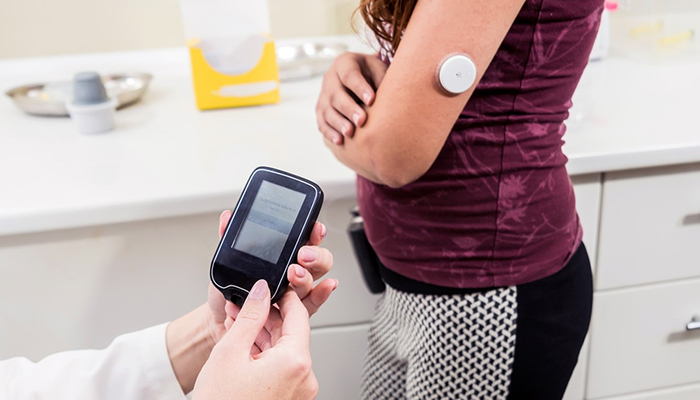
Continuous Blood glucose monitoring: for whom?
Some people living with diabetes are forced to measure their blood sugar daily to best adapt their treatment. This is why a continuous glucose monitoring system is of interest to them.
These are mainly patients living with type 1 diabetes, or even type 2 diabetes, who must administer insulin several times a day and who, to do this, must closely monitor their blood sugar levels.
MCG would be particularly useful and indicated for:
- Patients with high HbA1c levels have difficulty balancing despite an optimized insulin regimen.
- Patients who have experienced severe hypoglycemia result in emergency medical interventions.
- Children and adolescents who often have significant glycemic instability, and for whom the diet can be unstructured, are often associated with variable physical activity.
- Patients who need remote support for the optimized management of their diabetes and insulin therapy by their close entourage (parents or caregivers).
However, there is no typical profile for the use of a CGM system. Indeed, the results of large studies (DIAMOND, GOLD, REPLACE) are quite consistent in the fact that continuous glucose measurement improves glycemic control in all profiles of patients treated with insulin.
